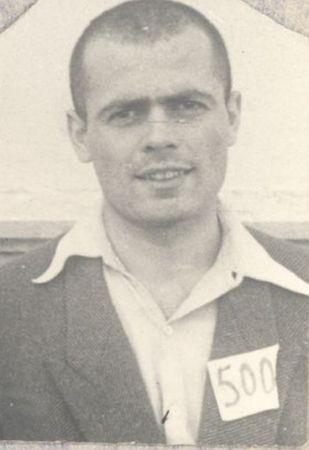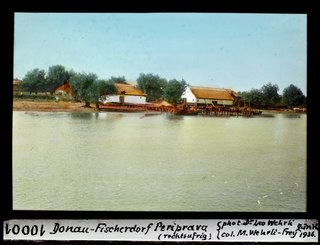Related Research Articles

Pitești Prison was a penal facility in Pitești, Romania, best remembered for the reeducation experiment which was carried out between December 1949 and September 1951, during Communist party rule. The experiment, which was implemented by a group of prisoners under the guidance of the prison administration, was designed as an attempt to violently "reeducate" the mostly young political prisoners, who were primarily supporters of the fascist Iron Guard, as well as Zionist members of the Romanian Jewish community. The Romanian People's Republic adhered to a doctrine of state atheism and the inmates who were held at Pitești Prison included religious believers, such as Christian seminarians. According to writer Romulus Rusan, the experiment's goal was to re-educate prisoners to discard past religious convictions and ideology, and, eventually, to alter their personalities to the point of absolute obedience. Estimates for the total number of people who passed through the experiment range from at least 780 to up to 1,000, to 2,000, to 5,000. Journalist Laurențiu Dologa estimates almost 200 inmates died at Pitești, while historian Mircea Stănescu accounts for 22 deaths during the period, 16 of them with documented participation in the "re-education".
Alexandru Nicolschi was a Romanian communist activist, Soviet agent and officer, and Securitate chief under the Communist regime. Active until 1961, he was one of the most recognizable leaders of violent political repression.

Eugen Țurcanu was a Romanian criminal who led a group that terrorized their fellow inmates during the late 1940's at Pitești Prison in Pitești, Romania. In a well publicized trial, Turcanu and fifteen of his accomplices were convicted in the deaths of several inmates and executed.

Gherla Prison is a penitentiary located in the Romanian city of Gherla, in Cluj County. The prison dates from 1785; it is infamous for the treatment of its political inmates, especially during the Communist regime. In Romanian slang the generic word for a prison is "gherlǎ", after the institution.

Aiud Prison is a prison complex in Aiud, Alba County, located in central Transylvania, Romania. It is infamous for the treatment of its political inmates, especially during World War II under the rule of Ion Antonescu, and later under the Communist regime.
Re-education in Romanian communist prisons was a series of processes initiated after the establishment of the communist regime at the end of World War II that targeted people who were considered hostile to the Romanian Communist Party, primarily members of the fascist Iron Guard, as well as other political prisoners, both from established prisons and from labor camps. The purpose of the process was the indoctrination of the hostile elements with the Marxist–Leninist ideology, that would lead to the crushing of any active or passive resistance movement. Reeducation was either non-violent – e.g., via communist propaganda – or violent, as it was done at the Pitești and Gherla prisons.

The Periprava labor camp was a labor camp operated by the Romanian communist regime, part of the Brăila Pond labor camps. The camp, located near the village of Periprava in the Danube Delta, held up to 2,000 prisoners. According to a study done by the International Centre for Studies into Communism, 8.23% of political prisoners in Communist Romania did time at Periprava. In the literature on communist prisons and camps in Romania, the Periprava labor camp is described as one of the harshest places of imprisonment. In view of the extremely severe detention and work regime, sheer terror, and high mortality, the camp is known among former detainees as a true "death camp".
Târgșor Prison is a prison complex in Târgșoru Nou, a component village of Ariceștii Rahtivani commune, Prahova County, located in central Muntenia, Romania.
Jilava Prison is a prison located in Jilava, a village south of Bucharest, Romania.
The lead mine prison camps in Communist Romania operated in the early to mid-1950s at three sites in Maramureș County: Baia Sprie, Cavnic and along the Nistru valley.
The Caransebeș Prison was a prison in Caransebeș, Romania.
Ocnele Mari Prison was a prison located in Ocnele Mari, Vâlcea County, Romania.

Târgu Ocna Prison is a prison located in Târgu Ocna, Bacău County, Romania.
Botoșani Prison is a prison located in Botoșani, Romania.
Craiova Prison is a prison located in Craiova, Romania.
Brașov Prison was a prison located in Brașov, Romania.
Oradea Prison is a prison located in Oradea, Romania.
Cluj Prison was a prison located in Cluj, Romania.
Mislea Prison was a prison located in Mislea, Prahova County, Romania.
Dumbrăveni Prison was a prison located in Dumbrăveni, Romania.
References
- Muraru, Andrei (2008). Dicționarul penitenciarelor din România comunistă: 1945–1967 (in Romanian). Institutul de Investigare a Crimelor Comunismului în România. Iași: Polirom. ISBN 978-973-46-0893-5. OCLC 297531689.